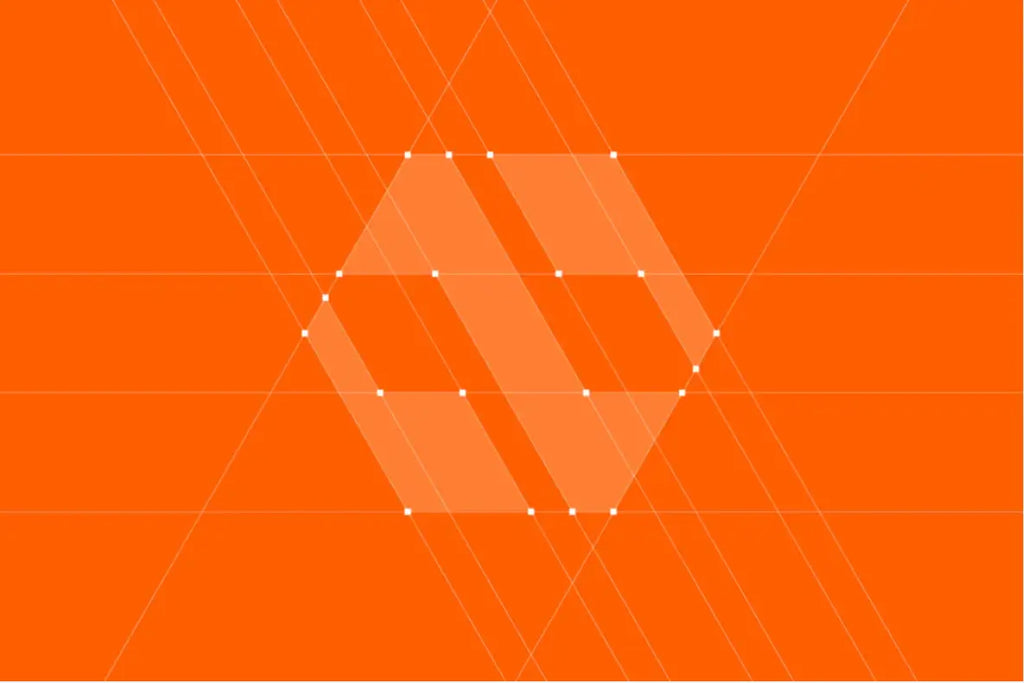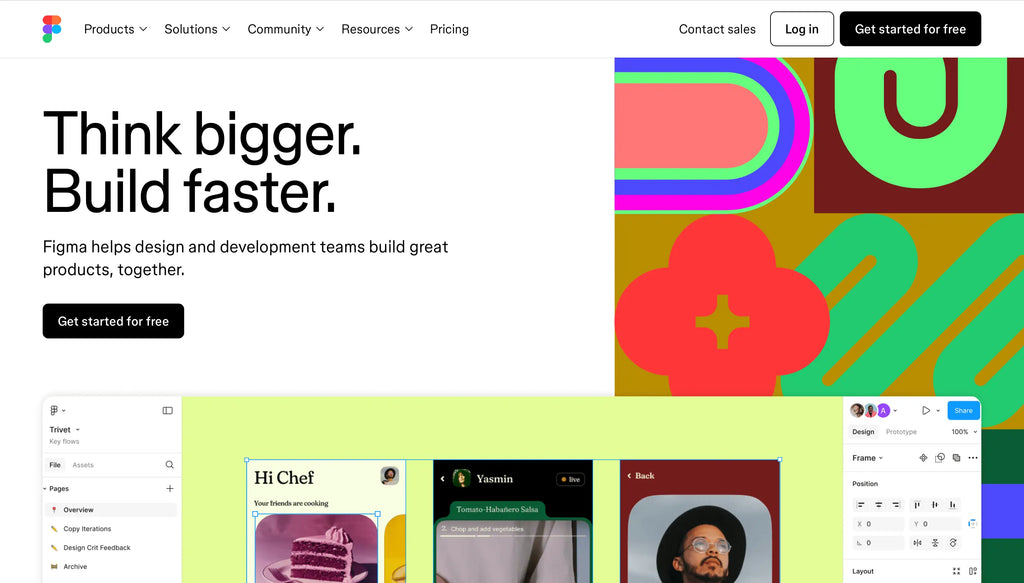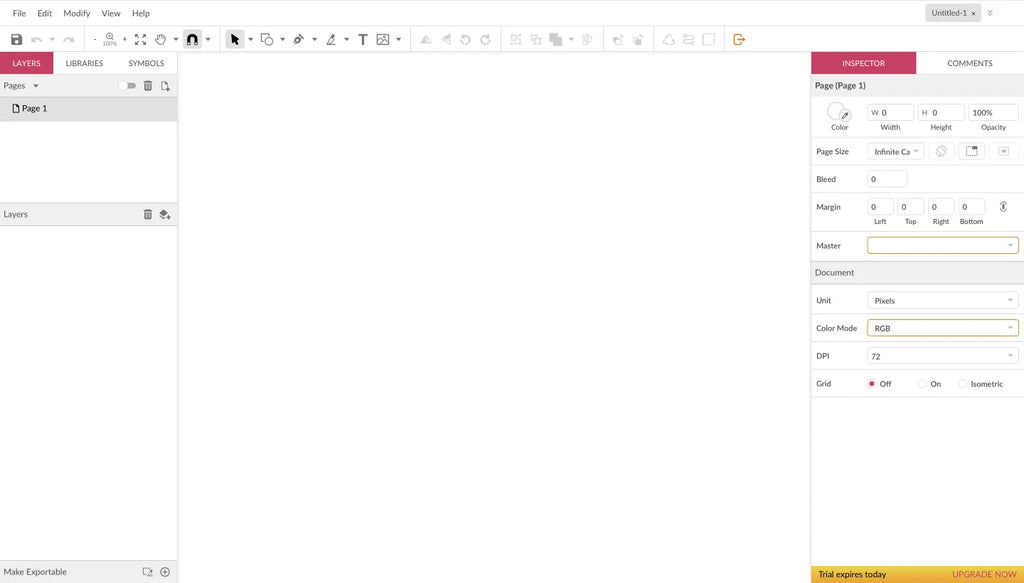Tools and Resources for Effective Grid System Logo Design

Source: Elif Kamesoglu, Necta, Behance, https://www.behance.net/gallery/180262865/Necta?isa0=1
Utilizing a grid system is one of the most effective methods to ensure that every element of a logo is aligned and harmoniously proportioned. A well-implemented grid system can transform a simple logo into a memorable brand symbol that stands the test of time. This approach not only helps in maintaining visual consistency across various media but also ensures that the logo can be scaled without losing its aesthetic appeal.
For designers, both novice and experienced, understanding the tools and resources available for grid-based design is crucial. These tools facilitate the meticulous process of logo creation, from conceptual sketches to final vector illustrations. In this article, we will explore a variety of software and resources that support the effective use of grid systems in logo design.
Each tool offers unique features that can enhance the design workflow and contribute to the creation of striking and effective logos. Whether you're working on a tight deadline or crafting a logo for a major brand, the right tools can make the process smoother and more efficient.
Adobe Illustrator: A Key Tool for Grid System Logo Design
Adobe Illustrator remains a cornerstone in the realm of logo design, particularly for implementing effective grid systems. Renowned for its precision and versatility, Illustrator offers an array of features that empower designers to create intricate and balanced logos. The application's grid tool can be effortlessly customized to fit specific project needs, allowing for both simple and complex grid setups. This flexibility makes it an ideal choice for logo designs that require meticulous alignment and proportion.
Illustrator's snapping feature enhances this precision, as it automatically aligns objects to the nearest grid line, thus ensuring that every element of the logo is perfectly positioned. Moreover, the ability to save and reuse grid templates speeds up the design process and promotes consistency across projects. Whether you're designing a logo that is simple or intricate, Illustrator provides the robust toolset needed to integrate the grid system seamlessly into your creative workflow.
Additionally, Illustrator supports scalability without loss of quality, which is crucial when logos are used across different mediums. With its comprehensive vector tools, designers can refine every aspect of a logo, ensuring that it not only looks professional but also truly encapsulates the brand's essence through balanced and harmonious design.
Sketch: Streamlining Grid System Logo Design
Sketch has carved out a niche in the digital design landscape, particularly for those focusing on the aesthetic integration of grid systems into logo design. This vector-based design tool is celebrated for its simplicity and effectiveness, making it a favored choice among graphic designers who value efficiency and ease of use.
The application offers a built-in layout grid that can be tailored to specific design requirements, allowing designers to establish a structured framework for their logo projects. Sketch's grid tool is especially useful for ensuring that all elements are aligned precisely, which is essential for creating visually appealing and balanced logos. This is complemented by Sketch’s minimalistic interface, which reduces distractions and focuses more on design elements.
Another advantage of using Sketch for grid system logo design is its community and plugin support. Designers can access a multitude of plugins that enhance functionality, such as automating repetitive tasks or extending grid capabilities, thus further streamlining the design process. Moreover, Sketch files are easy to share and collaborate on, which is beneficial in a team setting where multiple designers might be working on the same logo project.
With its user-friendly approach and robust grid system tools, Sketch enables designers to craft distinctive logos that are not only aesthetically pleasing but also perfectly aligned and scalable to any size.
Figma: Enhancing Grid System Logo Design
Figma has emerged as a powerful tool in the design world, particularly valuable for those implementing grid systems in logo design. As a browser-based platform, Figma offers versatility and accessibility, allowing designers to work from anywhere and share their projects effortlessly with clients or team members. The tool's grid system features are robust, enabling designers to create detailed and adjustable grids that can be overlaid on the design canvas to guide the layout process.
One of the key advantages of Figma is its real-time collaboration feature. Multiple designers can work on the same file simultaneously, making it an ideal choice for teams that need to align on every detail of the logo design process. This collaboration extends to adjusting and experimenting with grid systems, ensuring that every element is perfectly placed and balanced according to the project’s specific requirements.
Furthermore, Figma supports a variety of grid options including columns, rows, and squares, which can be customized to match the exact needs of the logo design. This flexibility allows for precise control over spacing and alignment, which is crucial for creating a visually coherent logo. The ease of use and intuitive interface of Figma ensures that designers can focus more on creativity and less on managing software complexities, making it a top choice for modern logo designers.

Source: Figma, https://www.figma.com
Grid Calculator: Precision in Grid System Logo Design
The Grid Calculator is an essential online tool for designers focusing on grid system logo design. This tool simplifies the complex calculations required to create a perfectly balanced grid, which is crucial for structuring any professional logo design. By inputting a few basic parameters such as the desired number of columns, margins, and gutters, designers can receive a precise grid that serves as a foundation for their creative projects.
Utilizing a Grid Calculator helps ensure that all graphical elements of the logo are proportionally spaced and aligned, which enhances the overall aesthetic appeal and functionality of the logo. This is particularly important for logos that must be versatile across various media and sizes. The calculated grid can be easily implemented into any graphic design software, serving as a guide to maintaining consistency and alignment throughout the design process.
Moreover, the Grid Calculator is invaluable for designers who need to quickly adjust their grids based on changing client requirements or design specifications. It allows for rapid iterations without compromising on the precision needed for high-quality logo design. Whether working on a complex identity system or a simple logo, the Grid Calculator provides the necessary tools to integrate mathematical precision with artistic design, leading to logos that are not only visually appealing but also strategically structured.
Canva: Accessible Grid System Logo Design
Canva has revolutionized graphic design with its user-friendly interface and accessibility, making it a popular choice for those involved in logo design using grid systems. Although primarily known for its simplicity, Canva provides essential grid templates that help designers align elements harmoniously, ensuring that the logos maintain balance and aesthetic appeal. These templates are particularly useful for beginners or non-designers who want to create professional-looking logos without deep technical skills.
The platform offers a drag-and-drop editor where grids can be easily adjusted to suit specific design needs. This feature is ideal for experimenting with different layouts and visual compositions, making Canva an excellent tool for rapid prototyping of logos. Additionally, Canva’s library includes thousands of pre-designed elements and typography options that can be aligned within these grids, helping to streamline the design process further.
For designers looking for a quick and effective way to employ grid systems in their logo projects, Canva’s approach provides a blend of simplicity and functionality. This makes it possible to create visually appealing logos that are well-structured and adaptable across different mediums, from digital platforms to print materials. With Canva, achieving a professional-grade logo design is accessible to everyone, regardless of their graphic design proficiency.
CorelDRAW: Advanced Grid System Logo Design
CorelDRAW stands out in the graphic design software realm with its powerful capabilities in grid system logo design. Known for its precision and advanced tools, CorelDRAW offers designers the flexibility to create complex grid systems that can be fully customized to meet specific project requirements. This feature is crucial for creating logos that require intricate alignments and proportional accuracy.
The software provides dynamic guides and snapping options that allow designers to position elements perfectly within the grid, ensuring that every part of the logo aligns with mathematical precision. CorelDRAW’s customization options extend beyond simple grid lines, including the ability to set up isometric grids for designs that demand a three-dimensional perspective.
Moreover, CorelDRAW supports scalability and multi-page layouts, which are essential for designers working on comprehensive brand identity projects that include logos. The ability to maintain the integrity of the grid system across various applications ensures consistency and professionalism in all visual assets.
For professional designers looking for robust software with extensive grid customization capabilities, CorelDRAW offers the necessary tools to craft detailed and effective logos. The integration of grid systems into the design process through CorelDRAW not only enhances the visual impact of logos but also ensures that they are adaptable and consistent, catering to the needs of any branding effort.
Gravit Designer: Precision in Grid System Logo Design
Gravit Designer offers a versatile and accessible platform for implementing grid systems in logo design. This free, web-based tool provides a comprehensive set of features that cater to both novice and professional designers. Gravit Designer's grid system is highly customizable, allowing users to adjust spacing, number of columns, rows, and even the opacity of grid lines to suit their specific project needs.
One of the key benefits of using Gravit Designer for logo design is its flexibility across different operating systems, which ensures that designers can work from any device without compatibility issues. The software's snapping tools enhance the precision of element placement, crucial for achieving a balanced and aesthetically pleasing logo. Designers can rely on Gravit Designer’s grid system to maintain consistent alignment and proportionality throughout the creative process.
Additionally, Gravit Designer supports multiple file formats and offers cloud storage, enabling seamless collaboration and file sharing. This makes it an ideal choice for design teams working remotely or in dynamic environments. With its user-friendly interface and robust design tools, Gravit Designer empowers designers to create effective and impactful logos using grid systems, ensuring high-quality outcomes with minimal effort.

Source: Corel Vector, https://app.corelvector.com
Vectr: Streamlined Grid System Logo Design
Vectr is a free, cloud-based graphic design tool that simplifies the process of integrating grid systems into logo design. Its user-friendly interface makes it accessible for beginners, yet powerful enough for seasoned designers. Vectr offers basic grid settings that can be easily toggled on and off, providing a straightforward approach to aligning elements within a logo project.
This platform is particularly beneficial for designers who need to quickly create clean and professional logos. The grids in Vectr help ensure that all design elements are proportionally spaced and aligned, which is essential for the visual coherence of the logo. Additionally, Vectr's real-time collaboration feature allows multiple users to work on the same project simultaneously, enhancing the design process through immediate feedback and iteration.
Vectr’s lightweight nature means it doesn’t require high-performance hardware, making it accessible to designers with limited resources. Despite its simplicity, Vectr packs enough features to handle complex design tasks, including creating scalable vector graphics that are perfect for logos. For designers looking for an efficient and cost-effective solution to employ grid systems in logo design, Vectr provides the necessary tools to produce visually appealing and balanced logos effortlessly.
Procreate: Enhancing Grid System Logo Design on iPads
Procreate, a popular iPad app for digital artists and designers, integrates powerful tools that facilitate the use of grid systems in logo design. With its intuitive touch interface, Procreate offers a dynamic and flexible approach to building precise grid layouts, which are essential for creating balanced and harmonious logos. The app allows designers to customize grids according to their specific project needs, including adjusting spacings, angles, and subdivisions.
The versatility of Procreate lies in its ability to support both raster and vector layers, enabling designers to sketch initial logo concepts freely and then refine them into crisp vector forms. This feature is particularly useful when designing logos that require fine detail and scalability. Procreate's QuickShape tool helps in creating perfect geometric shapes that snap to the grid, ensuring every element is accurately aligned.
Furthermore, Procreate’s extensive brush library and advanced drawing tools allow designers to add unique textures and details to their logos, while still adhering to the grid system. The ability to export designs in various file formats makes Procreate a practical tool for professional logo design, ensuring that logos look great on all media platforms. For designers who prefer a more tactile approach to creating logos, Procreate offers a powerful solution that combines artistic freedom with technical precision.
Inkscape: Utilizing Grid Systems for Scalable Logo Design
Inkscape is a free, open-source vector graphics editor that excels in offering comprehensive tools for incorporating grid systems into logo design. This software is particularly favored by designers who need a robust, cost-effective solution for creating scalable logos. Inkscape’s grid system can be extensively customized to include different types of grids such as square, axonometric, and radial, which are invaluable for various logo design projects.
The precision of Inkscape’s grid tool enables designers to align elements meticulously, ensuring that each component of the logo is proportionally spaced and oriented. This alignment is crucial for the visual balance and symmetry of the logo, which, in turn, enhances its professional appearance. Inkscape also supports snapping controls, which assist designers in placing objects precisely along grid lines or at intersection points, facilitating an accurate design process.
Another significant advantage of Inkscape is its SVG-based nature, which ensures that logos remain sharp and clear at any size, a necessity for branding across different mediums. The software’s capability to manipulate paths and nodes with precision further aids designers in refining their logos to exact specifications.
For those seeking an accessible yet powerful tool for grid-based logo design, Inkscape provides a comprehensive suite of features that promote precision and creativity in the design process, making it a preferred choice for both beginners and experienced professionals.
Conclusion
Mastering the use of grid systems in logo design is essential for any designer aiming to create visually compelling and structurally sound logos. Whether you choose Adobe Illustrator, Sketch, Figma, or any other tool highlighted in this guide, the key is to leverage these resources to enhance the precision and effectiveness of your designs. By incorporating grid systems, designers can ensure their logos are balanced, cohesive, and adaptable across various applications. Embrace these tools and techniques to elevate your logo designs, making them not only aesthetically pleasing but also functionally robust and timeless.
Let Us Know What You Think!
Every information you read here are written and curated by Kreafolk's team, carefully pieced together with our creative community in mind. Did you enjoy our contents? Leave a comment below and share your thoughts. Cheers to more creative articles and inspirations!















Leave a Comment